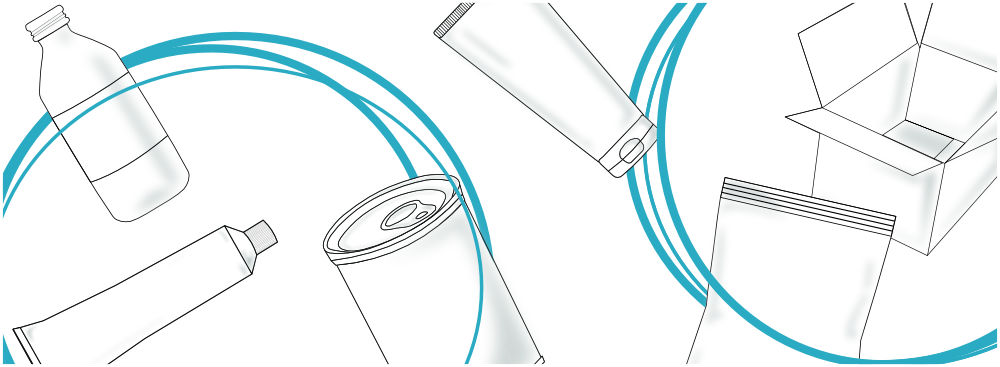
Recommendations for recyclable packaging design
October 10, 2020It is mainly due to legal requirements that the current focus of ecological sustainability in the packaging industry is on closing the material and product loops. The Circular Economy Package of the EU that entered into force in July 2018 includes provisions for enhancing circular approaches to raw materials at the European level. It aims at increasing the recycling rates of all packaging materials. With regard to the waste hierarchy, the long-term goal is to reduce the use of resources, encourage their preparation for reuse and enable the recycling of materials.
Design for recycling of packaging is a subarea of circular design and describes whether a packaging is suitable for handling in a sorting process and for material recovery by means of recycling.
Design from recycling refers to the second sub-aspect of the circular approach. Here, the focus is on the use of recycling material as a full substitute for virgin material of the same type. For this purpose, markets need to be opened up that permit the fully functional use of the secondary raw materials that have been recovered.
The Circular Packaging Design Guideline
The team of the Competence Centre for Sustainable and Future Oriented Packaging Solutions has drawn up a guideline that covers the entire value chain of the packaging industry. In addition, input provided by a council of experts and enterprises along the entire supply chain has been taken into account.
The Circular Packaging Design Guideline provides basic information on sustainable packaging design, as well as recommendations for the recyclable design of packaging systems for all actors along the value chain.
Research activities at the Section of Packaging and Resource Management
The research conducted by the experts at the Section of Packaging and Resource Management at the Department of Applied Life Sciences of FH Campus Wien focuses on the development of sustainable packaging, circular design, as well as the development of methods for assessing the sustainability and safety of packaging. Packaging should be recyclable and as resource-efficient and environmentally friendly as possible, while appropriately protecting the product. To achieve sustainable overall development, the interactions between all relevant factors need be taken into account.
For this purpose, the Section of Packaging and Resource Management carries out standardised analyses on the basis of comprehensive assessments.
Development of the Guideline
The Guideline will be updated continuously and amended in response to changes in collection, sorting and recycling technologies, as well as future material developments. These amendments will be discussed and further developed in the Circular Packaging Stakeholder Forum.
In the course of the last update (version 03) (PDF, 1,6 MB), the guideline was further developed together with experts from the entire value chain concerning legal situation, details for the design recommendations and a country comparison between Austria, Germany and the Netherlands.
- September 2020: revision and new contents version 03
- July 2019: revision and new contents version 02
- January 2019: first version 01
An add-on to the guideline was created for product-specific guidance addressed to brand owners and retailers as part of the cooperation with ECR Austria and is available online.
ECR guideline „Packaging Design for Recycling“
The Department of Packaging and Resource Management also works in cooperation with ECR Austria to prepare the contents of the Circular Packaging Design Guideline for a broader target group in a practice-oriented manner, placing the packaging system in the foreground.
The ECR guideline “Packaging Design for Recycling” communicates the contents of the Circular Packaging Design Guideline not only for packaging experts, but also for the branded goods industry and retailer in a user-oriented form.
The ECR guideline “Packaging Design for Recycling” is therefore based on the guideline of the FH Campus Wien and can be accessed below in the download section.
